The Importance of Six-Inch House Numbers Explained
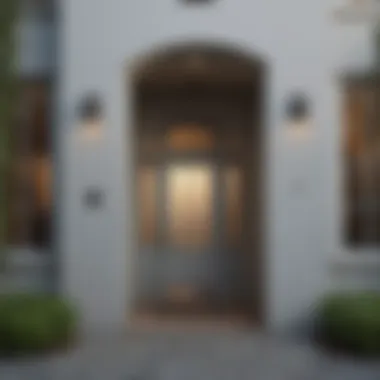

Intro
In the realm of home improvement, details can sometimes take a back seat. Yet, something as unassuming as the house numbers can hold significant weight in both the design aesthetics and functionality of a home. This article aims to explore the importance of six-inch house numbers, intertwining their utility with elements of style and design.
Overview of Topic
Six-inch house numbers might seem trivial at first glance, but they serve as the silent sentinels of our residences. Whether you're aiming to attract potential buyers or simply wish to ease the navigation for guests and emergency responders, effective house numbering plays a critical role. In an increasingly urbanized world, where homes are closely knit together, having clearly visible numbers eliminates confusion and enhances overall accessibility.
These numbers are not merely practical; they provide a canvas that can enhance the home’s outer appearance. Distinctive materials, fonts, and finishes can contribute to the property’s curb appeal, signaling to visitors that care has been taken in every aspect of homeownership. As we explore, it will become clear that the significance of these six inches goes beyond mere identification.
Common Challenges and Solutions
Homeowners often confront a few recurring challenges when it comes to implementing effective house numbering. Here are some of the most common issues:
- Visibility Problems: Poor lighting or disruptive landscaping can obscure house numbers, making them hard to see.
- Style Misalignment: Sometimes, the house number style doesn’t align with the overall aesthetic of the home, leading to a disjointed look.
- Material Durability: The choice of material can impact the longevity of the numbers, especially when weather conditions come into play.
To tackle these challenges, consider the following solutions:
- Lighting Solutions: Installing exterior lighting that highlights the house numbers can significantly improve visibility at night.
- Aesthetic Cohesion: Select house numbers that match the architectural style of your home. For instance, modern homes pair well with sleek, metallic numbers, while rustic homes might benefit from wooden or wrought iron.
- Weather-Resistant Materials: Opt for materials like stainless steel or UV-resistant acrylic which can withstand the test of time without fading or rusting.
Product Recommendations
When it comes to choosing the right six-inch house numbers, various brands offer excellent options. Here’s a closer look at a few standout products:
- Hillman 840916: Made from durable aluminum, this product is rust-resistant and features a sleek, modern design.
- Architectural Mailboxes: This brand provides customizable numbers with different colors and finishes, allowing homeowners to create a unique look.
- Sunripe 4-inch and 6-inch House Numbers: Made from high-quality plastic, these are both affordable and long-lasting, ideal for those wanting a budget-friendly option.
Each of these products can boost visibility and aesthetics with their varied designs and materials, catering well to diverse preferences.
Step-by-Step Guides
To ensure you achieve the best results while installing your six-inch house numbers, follow these practical steps:
- Choose Your Location: Ideally, house numbers should be placed near the main entry of your home.
- Measure and Mark the Area: Use a measuring tape to determine the optimal height and placement. A standard recommendation is placing them between 3 to 5 feet above ground.
- Select Your Numbers: Choose numbers that are not only appealing but also fit within the selected space efficiently.
- Prepare the Surface: Ensure the area where you will attach the numbers is clean and dry for optimal adhesion.
- Installation: Depending on the product, either use adhesive or screws to secure the numbers. Make sure they are level during installation for a professional look.
- Final Touches: Inspect the installation to ensure visibility and aesthetic coherence. Adjust if needed.
"A well-placed number speaks volumes about a house’s identity."
In summary, taking the time to consider the design and installation of six-inch house numbers can not only help navigate our busy lives but also project an image of attention to detail that enhances the beauty of our homes.
Intro to Six-Inch House Numbers
In today's fast-paced world, the significance of six-inch house numbers cannot be overstated. These numbers serve as a critical component of home identification and play an essential role in several practical applications. Not only do they help visitors locate a home, but they also ensure emergency services can quickly respond to calls in urgent situations. Having a clear, easily readable house number can mean the difference between navigating through a neighborhood with ease or getting lost in the shuffle.
Prominent display of house numbers also contribute to the aesthetics of a property. Homeowners invest considerable effort into their gardens, paint colors, and architectural styles. However, one often overlooked yet vital detail is the house number itself. A thoughtfully chosen number set can harmonize with the overall design of a home, adding to its curb appeal while serving its functional purpose.
Historical Context
The tradition of assigning numbers to houses dates back to the early days of urban planning. Initially, cities evolved haphazardly, leaving people to find their way around based on landmarks or vague directions. As communities grew, authorities recognized the need for a standardized numbering system. While European cities pioneered this practice in the 18th century, it was not until the late 19th and early 20th centuries that many regions in the United States formally adopted this idea. Six-inch numbers became a standard due to their ideal balance between visibility and subtlety.
Throughout the years, the materials and styles of these numbers have evolved. From hand-carved wooden numbers on rustic homes to sleek metal digits glinting in the sunlight, these visible identifiers encapsulate changes in architectural trends and personal taste.
Current Usage Trends
These days, six-inch house numbers are embraced in an astonishing variety of styles, materials, and layouts. Homeowners recognize their functionality and are increasingly keen to reflect their personality through this simple yet impactful detail. Many favor modern minimalism, opting for sharp lines and clean fonts that meld with contemporary designs. Others gravitate toward rustic charm with wooden or aged metal styles, evoking a sense of heritage.
Also noteworthy is the rising trend of environmentally-conscious materials. As more people are putting effort into sustainable living, they are looking for house numbers made from recycled or eco-friendly substances. This tailored approach allows homeowners to not only identify their property effectively but do so while aligning with their values.
"House numbers are more than just digits; they're the first impression guests and passersby will have of your home. Choose wisely."
Importance of Visibility
When considering house numbers, the significance of visibility cannot be overstated. Well-designed house numbers serve a fundamental purpose: they make it easy for visitors and emergency services alike to locate a property quickly. This importance goes beyond mere aesthetics; it intertwines functionality with safety and convenience. In a world where time is often of the essence, the ability to spot a house number from a distance can make all the difference, especially in urban environments where homes are stacked closely together.
Impact on Navigation
House numbers act as guideposts. They play a critical role in navigation, particularly in larger neighborhoods. Six-inch numbers provide an ample size that strikes a balance between being easily readable and aesthetically pleasing. They often catch the eye without overwhelming the visual appeal of the property. Imagine a delivery driver scouting for the right address; a clear, bold six-inch number on the front door or beside the mailbox can save time and eliminate frustrations. In fact, many people underestimate how a simple numerical digit can ease the flow of everyday life.
- Visibility enhances accuracy in navigation. A six-inch number is typically easy for stray eyes to catch, even from a moving vehicle. It combines with the contrast of colors often chosen—dark numbers against light backgrounds or vice versa—to achieve maximum legibility.
- Ease of Reading is especially crucial during twilight or poor weather conditions, where visibility can diminish quickly. Navigational apps may give a specific location, but without prominent numbers visible from the street, finding the exact spot is another thing altogether.
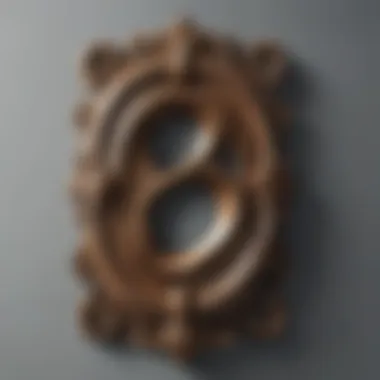
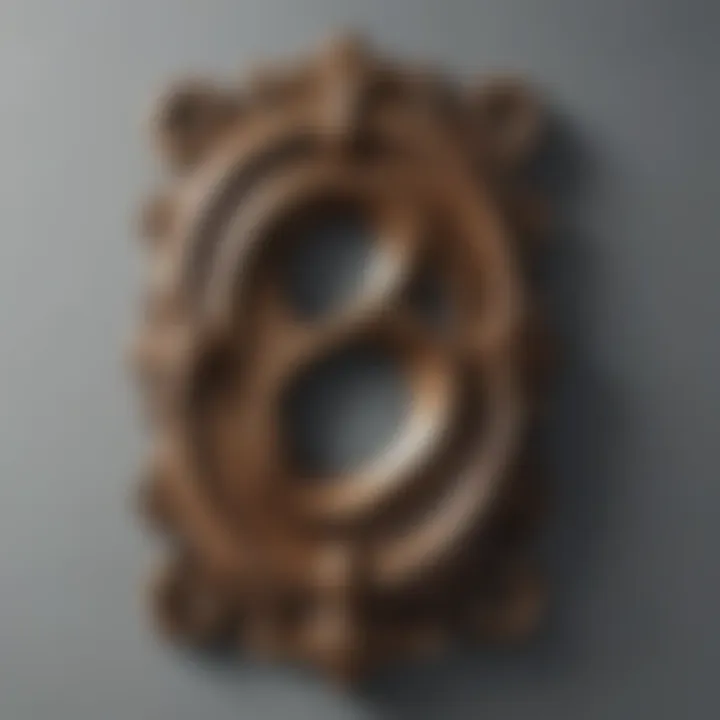
To bolster this argument, consider anecdotal evidence from neighbors who’ve had deliveries go awry simply because their house number lacked clarity. Residents often end up on next-door neighbors’ doorsteps, causing a ripple of confusion. Recognizing that visibility leads to efficient navigation instills the importance of selecting numbers that stand out—but it also highlights the failings of inadequate designs.
Emergency Response Considerations
In emergencies, seconds matter, and house numbers can play a pivotal role in the quick response times of service providers. Firefighters, police officers, and medical responders must locate addresses without delay. Six-inch house numbers can significantly enhance visibility in critical situations.
- Ability to Respond: A clearly-visible number aids responders in finding the right location swiftly. Studies have shown that many emergency response delays arise from difficulties in locating addresses. Those precious minutes lost in confusion can be the difference in crucial situations, such as medical emergencies.
- Community Safety: Neighbors benefit as well when a house number is easily visible. If a situation arises next door, nearby residents have a better understanding and can communicate effectively with emergency services about where they should go.
In closing, investing in a six-inch, well-placed house number doesn't just improve aesthetics and navigation; it serves as a silent yet vital player in securing safety and fast emergency responses. Subsequently, homeowners should regard this decision as part of a broader commitment to their family’s security and the overall well-being of their community.
"A well-displayed house number is not just a numerical label; it is an essential tool for navigation and safety."
By acknowledging the critical role visibility plays in house numbers, homeowners can make more informed decisions that benefit both their household and the wider community. Whether thinking about curb appeal or safety, visibility stands as a cornerstone of effective house number design.
Design Aspects of Six-Inch House Numbers
When delving into the realm of six-inch house numbers, the design aspects cannot be overlooked. These elements breathe life into what could otherwise be a mundane task of labeling homes. The right design amplifies the visibility and aesthetic harmony of a property, making it essential for homeowners to pay attention to details like font, color, and placement. A well-thought-out design not only fulfills a functional purpose but also contributes significantly to a home's overall curb appeal.
Font and Typography Choices
Selecting the right font for house numbers isn't just about preference; it's about visibility and readability. A clear typeface ensures that anyone—be it a delivery driver or a guest—can quickly identify the home from the street. Consider fonts that are bold yet simple, like Arial or Helvetica; these tend to stand out from a distance. Avoid overly ornate styles that can turn into a jigsaw puzzle for the onlooker.
Additionally, the height and weight of the font play crucial roles. For instance, taller numbers might grab attention better but should still maintain proportionality to the six-inch requirement. Experimenting with various typographic rules can lead to surprising results. Here are some factors to keep in mind when selecting a font:
- Readability: Ensure it’s legible from a distance, especially for emergency services.
- Style and Tone: Align the typography with the overall theme of your home. A modern home might benefit from sleek, sans-serif fonts, while a Victorian-style house may suit more traditional serif fonts.
- Boldness: Thicker letters often provide enhanced visibility.
Color Schemes and Contrast
Color schemes are vital in creating impactful house numbers. It's not just about picking a favorite color; it’s about ensuring the number stands out against its background. If your home is a deep blue, consider white or bright yellow numbers. The key is to maintain a high contrast to enhance visibility, especially at dusk.
Colors can convey emotions and set the tone of your home's personality. Here are some color considerations:
- Natural Elements: If the house is surrounded by greenery, earthy tones might blend in, making them harder to spot. Brighter colors could offer the necessary pop against a lush backdrop.
- Neighborhood Trends: Consider the surrounding environment. Matching or differentiating from nearby houses can affect curb appeal.
- Lighting Effects: Think about how the color reflects light. Shiny surfaces might glow more under bright conditions, while matte finishes could absorb light, impacting visibility at night.
Placement and Mounting Options
Where you place the house numbers is a critical factor that could make or break their effectiveness. A number that sits too high or is hidden by foliage will do little to help guests find their way. Optimal placement generally suggests that numbers should be mounted between 4 to 6 feet from the ground, ensuring they're easily spotted.
Additionally, consider these mounting options:
- Security: Ensure that house numbers are securely fastened, as loose numbers can become easy targets for theft or vandalism.
- Lighting: Installing numbers near a light source, like porch lights, can significantly boost their nighttime visibility.
- Backdrops: A solid, contrasting background makes it easier for the numbers to pop visually. Using a plaque for the numbers can also add a stylish touch.
"The design of your house numbers is likely the first impression people will have of your home. Ensure it conveys the right message!"
Material Selection for House Numbers
Choosing the right material for house numbers is more than just a design choice; it impacts an array of factors including durability, visibility, and aesthetic appeal. A well-selected material not only enhances the look of your property but also ensures that the numbers withstand various environmental conditions. Let's take a closer look at both traditional materials and modern alternatives and understand how each can meet specific needs in house number selection.
Traditional Materials
Wood
Wooden house numbers are often chosen for their natural charm and ability to create a warm, inviting look for a home. One of the key characteristics of wood is its versatility; it can be easily customized with paint, stain, or finish to match your home's decor. This makes it a popular choice among homeowners looking to express their personal style. However, wood does come with some considerations.
While it is relatively inexpensive and sustainable, wood can be susceptible to weathering, which can lead to fading, warping, or even cracking over time. Homeowners may find themselves needing to replace wooden numbers sooner than those made from more durable materials. Still, when looking for an organic touch, wood remains a beloved option.
Metal
Metal house numbers, such as those made from aluminum or stainless steel, offer a sleek and modern aesthetic that can suit both contemporary and traditional homes. A significant advantage of metal is its durability; it generally withstands the elements much better than wood. The key characteristic of metal numbers is their resistance to fading and weather conditions, meaning they can maintain their appearance for many years with minimal maintenance.
However, certain metals can be susceptible to rust if not properly treated. Moreover, the choice of metal can contribute to the overall style of a property—brushed, polished, or even colored finishes provide various options for customization. Improper installation can lead to unsightly scratches, so care must be taken when choosing the mounting method.
Stone
Stone house numbers are known for their timeless elegance and long-lasting qualities. Granite and slate are common choices, and these materials exude an undeniable sense of sophistication. The key characteristic of stone is its durability; it is highly resistant to environmental wear and can withstand harsh conditions for decades. This makes it an excellent investment for homeowners who prioritize longevity.
That said, stone does come with a heavier weight and potential installation challenges. It often requires special mounting techniques which might increase installation costs. Despite this consideration, the uniqueness of stone—with its natural variations—adds character that many homeowners find desirable.
Modern Alternatives
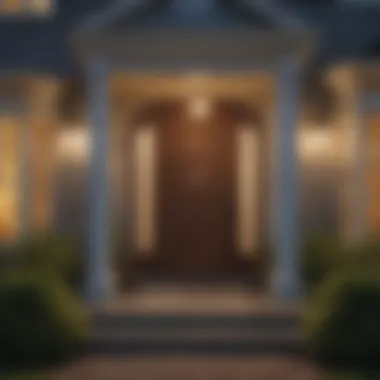
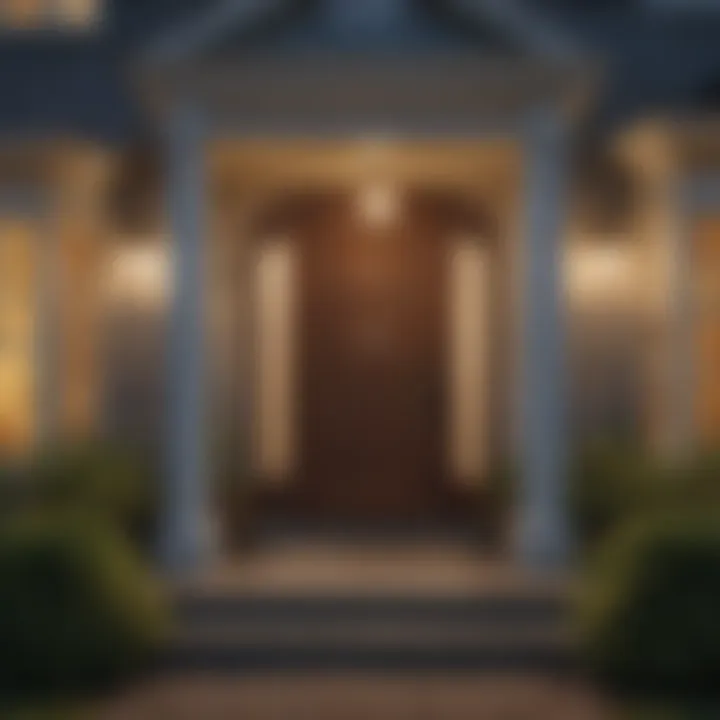
Acrylic
Acrylic house numbers have gained traction in recent years due to their flexibility in design and relatively lightweight nature. The main advantage of acrylic is its versatility in color and shape, allowing it to be tailored to fit various styles. Homeowners can choose from a wide array of patterns, giving them complete creative control.
However, acrylic can be prone to scratches and may not be as durable as metals or stone. They tend to fade over time when exposed to sunlight, which can detract from their appearance. While relatively inexpensive, they may not provide the longevity that other materials do, making them a good choice for temporary uses or less prominent installations.
Plastic
Plastic is often viewed as an economical option for house numbers. Lightweight and easy to handle, plastic can be molded into various shapes and colors with relative ease. The key characteristic of plastic is its affordability, which makes it appealing for budget-conscious homeowners.
However, plastic numbers may fade or degrade quicker than higher-quality materials, especially when subjected to strong UV light or severe weather. While they do come in vibrant colors, their lower durability might lead to frequent replacements. For those seeking a no-frills, cost-effective solution, plastic can be a valid choice, but the compromise on longevity is evident.
Composite Materials
Composite materials blend the best of various elements, often combining wood or plastic with resins for enhanced durability. This results in house numbers that are resistant to cracking and fading, thus extending their lifespan. These materials can mimic the look of more traditional options, giving them an attractive aesthetic without heavy maintenance requirements.
On the downside, the initial cost of composite numbers can sometimes be higher than standard options, depending on the manufacturing process. Nonetheless, for discerning homeowners pursuing sustainability and long-term value, composite materials offer an appealing compromise between aesthetics and practicality.
Using a thoughtful approach to material selection not only ensures that the house numbers serve their primary purposes but also elevates the overall appeal of the property. Each option carries its pros and cons, but knowing what to prioritize can lead to a decision that suits both functionality and personal taste.
Technological Innovations
Technological advancements have seeped into every corner of our lives, and house numbers are no exception. Six-inch house numbers have evolved beyond traditional displays, showcasing innovative features that enhance functionality and aesthetics. This section dives into the significance of these technologies, highlighting the benefits they bring and considerations involved when opting for such modern solutions.
Illuminated House Numbers
Lighting plays a pivotal role in visibility. Illuminated house numbers are one innovation that serves both aesthetic and practical purposes. These numbers can give homes a modern flair while ensuring occupants and visitors can easily locate a residence, especially at night.
- Enhanced Visibility: A well-lit house number stands out in the dark, improving navigation for delivery personnel or emergency responders. For instance, motion-sensor lights or solar-powered illuminations can automatically brighten at twilight.
- Aesthetic Appeal: These numbers can be crafted in various styles, from sleek LEDs to more classical fixtures. Homeowners can customize them to match their landscaping or home architecture, turning banal numbers into conversation starters.
- Environmental Considerations: Utilizing solar energy can lessen power consumption. Solar-powered illuminated numbers charge throughout the day and light up at night, which is eco-friendly while being economical.
Considerations: Before installing, homeowners should evaluate installation costs, maintenance, and the need for a power source. Some models may require hardwiring, while others are plug-and-play.
"A well-illuminated house number not only brightens up the street but also adds charm to a home's exterior."
Smart Home Integration
As homes get smarter, house numbers can join the parade of intelligent features. With the rise of smart home technology, integrating house numbers into a smart system presents unique possibilities.
- Automation: Smart house numbers can be linked to home automation systems. For example, they might light up or change color when a resident arrives home or as part of a larger welcoming gesture within the smart environment.
- Real-Time Updates: With apps linked to house numbers, homeowners can receive notifications about weather changes that might affect outdoor lighting, or even reminders for maintenance checks, ensuring those numbers look their best.
- Enhanced Security: Some smart numbers can link to security cameras, providing an extra layer of safety. They'll notify the owner if someone approaches or tampering is detected.
Considerations: A proper understanding of technology is needed to ensure seamless integration. Compatibility with existing home automation systems and safeguarding users' data should be prioritized.
Curb Appeal and Aesthetic Considerations
Focusing on curb appeal is a key aspect when discussing six-inch house numbers. These numbers serve not only a functional purpose but also contribute significantly to the overall aesthetic of a property. A neatly displayed house number can enhance a home’s appearance, drawing attention to its stylistic features and adding to its personality. A well-chosen number can even reflect the character of the homeowners, creating a welcoming vibe for guests.
Enhancing Property Value
Investing in attractive house numbers can influence the perceived value of a property. Numbers crafted from durable materials and designed with care can make a statement about the homeowner's attention to detail. For instance:
- Quality Materials: House numbers made from brass or stainless steel often command respect and can suggest longevity, which potential buyers are keen on.
- Consistent Design: When the style of the number matches the architectural design of the home, it creates a cohesive look that can attract buyers.
- Professional Installation: Proper placement ensures visibility, which is appealing in listings and during showings.
These factors work together to enhance curb appeal and can, in effect, lead to a higher selling price if the house ever goes onto the market.
Stylistic Choices Aligned with Architecture
Choosing the right house number involves more than just picking a set of digits; it’s about making decisions that resonate with the architectural style of the home. It communicates a lot—each number can serve as an extension of the architectural narrative.
- Modern Homes: Sleek, minimalistic house numbers in sans-serif fonts complement the clean lines of a contemporary home. Think of shiny metallic options or simple vinyl in bold colors for maximum impact.
- Traditional Homes: Classic serif fonts or script styles often suit older homes, presenting a touch of elegance. Material such as wrought iron or wood can reflect the history and charm of the architecture.
- Eclectic Styles: For those who love an unusual vibe, combining different colors and textures can create a uniquely expressive look that stands out.
Tasteful, well-aligned design choices not only improve curb appeal but help to narrate a property’s story visually.
"The smallest details often make the largest impacts in home design."
Ultimately, six-inch house numbers should do more than indicate residence; they should integrate seamlessly with the property’s aesthetics, contributing to its charm and making it inviting.
Legal and Practical Regulations
When it comes to six-inch house numbers, navigating the maze of legal and practical regulations can feel a bit like trying to find your way through a foggy night. But understanding the rules governing these numerals is crucial. Not only do these regulations ensure compliance with local codes, but they also help maintain order and safety in neighborhoods. Let’s dive into the specifics, revealing what house owners need to keep in mind.
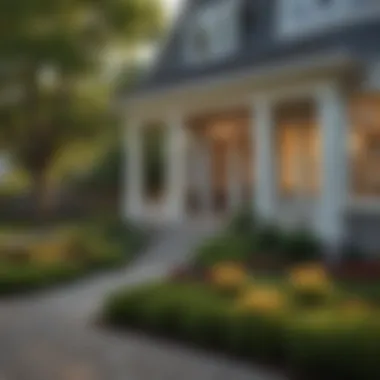
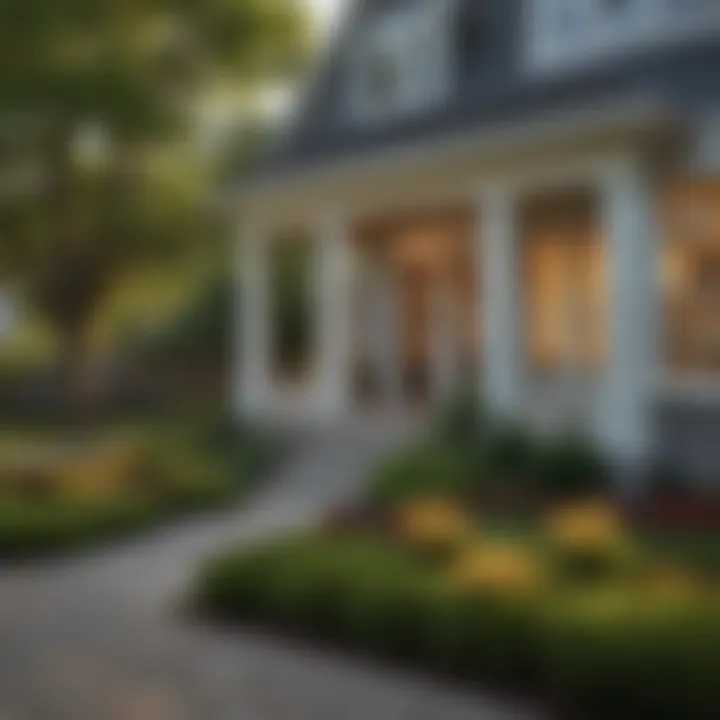
Local Ordinances and Compliance
Every locality has its own set of rules regarding house numbers. These ordinances vary widely—what is acceptable in a city might not fly in a rural area. For instance, many municipalities specify the size, font, and placement of house numbers for clear visibility. Here are some key points to consider:
- Size and Height: Some regulations mandate that house numbers must be at least six inches tall, as smaller numbers may be hard to read from a distance.
- Material Used: Certain areas might have preferences towards specific materials for aesthetic harmony. Compliance not only avoids fines but helps in keeping up a good neighborhood rapport.
- Placement Guidelines: Local laws often dictate whether the numbers should be mounted near the entrance, porch, or the curb. Adhering to these guidelines is essential for ensuring emergency responders can locate homes quickly.
Ignoring these local ordinances can lead to more trouble down the line. Fines, mandated removals, or even the headache of potential emergency issues can all stem from negligence regarding legal requirements. It’s wise to check with your local building authority or city ordinances before diving into a design.
Installation Standards
With the legal landscape mapped out, it's time to look at how to properly install these house numbers. Installation standards vary and are based not only on regulations but also on best practices to ensure visibility and longevity:
- Height: Most guidelines suggest that numbers be placed between four to five feet above ground level. This ensures they are visible to both pedestrians and vehicles.
- Background Contrast: Installing the numbers against a contrasting background—say, white numbers on a dark door—improves visibility, especially in low-light conditions.
- Secure Mounting: Ensuring that numbers are properly anchored can prevent them from falling over time due to weather conditions. Use weatherproof materials to avoid rust or decay.
By following these practical regulations, homeowners can not only comply with local laws but enhance their property’s overall visibility and value. Always remember, house numbers aren’t just decorative; they play a significant role in safety and navigational ease for visitors and emergencies alike.
"Properly installed house numbers are not just a necessity—they're a lifeline in case of an emergency," says community safety expert Karen Thompson.
Making it a point to address local ordinances and installation standards can save homeowners from unintended troubles and foster a sense of community responsibility. Keeping it all above board is a surefire way to enjoy the peace of mind that comes with an easily identifiable home.
Case Studies and Examples
In the realm of six-inch house numbers, real-world applications speak volumes about their impact and effectiveness. Analyzing case studies provides valuable insights into how different styles and implementations can enhance both functionality and aesthetics. It’s not just about having numbers on a house; it’s about creating an identifiable presence that many factors can influence.
Successful Implementations
When delving into successful implementations of six-inch house numbers, several standout examples come to mind. Take, for instance, a downtown urban residence that opted for bright white, modern metal numbers. These numbers, mounted directly onto a vibrant navy blue wall, stand out starkly, creating an eye-catching focal point. The choice of size not only meets visibility standards but also aligns perfectly with contemporary architectural trends.
In another case, a historic Victorian home retained its character through the use of antique brass numbers that, while still adhering to the six-inch guideline, blended with the charm of the property. Here, the numbers were carefully mounted adjacent to the original porch lantern, ensuring that they catch the light beautifully at night, aiding visibility without compromising the home’s vintage aesthetic.
Successful implementations also include those that consider landscaping. For example, a minimalist modern home used etched stone numbers, securely placed on a low stone wall edging the driveway. This placement was strategic; it ensured that the numbers are equally visible day and night, making it easier for guests and service providers alike to identify the home amidst similar homes in the neighborhood.
Comparisons of Different Styles
Understanding how various styles of six-inch numbers can serve distinct needs is crucial. Here are a few comparisons that highlight the pros and cons of different choices:
- Material Choices:
- Font and Typography:
- Color Schemes:
- Metal Numbers: Highly durable and weather-resistant, metal numbers also provide a sleek, modern look. They are often available in various finishes, which can complement different architectural styles.
- Wood Numbers: These can add warmth to a home’s exterior but may require regular maintenance to prevent weathering.
- Acrylic Numbers: Lightweight and often colorful, acrylic numbers can be an affordable option. However, they may not hold up as well in extreme weather conditions.
- Serif Fonts: These can lend a classic and elegant touch, suitable for historic or traditional homes. The intricacy of the letters can also enhance curb appeal.
- Sans-serif Fonts: These typically offer a streamlined, contemporary vibe that can match modern architecture. They are often easier to read from a distance.
- High-contrast Combinations: Black numbers on a white background or vice versa ensure that the house number stands out. This is particularly important for safety and visibility.
- Subtle Blending: Some homeowners may prefer colors that blend into their house color. While this can be stylish, it might hinder visibility at night or in bad weather.
"The key to effective house numbers lies not just in their size, but in their ability to resonate with the homeowner's style while maintaining critical visibility for guests and services."
The discussions sparked by these comparisons help illuminate how personalized choices can still meet practical needs. Through successful implementations and stylistic comparisons, it becomes clear that six-inch house numbers can be tailored to suit any home’s unique character while fulfilling crucial visibility requirements.
Finale and Future Directions
As we draw the curtain on the exploration of six-inch house numbers, it's crucial to recognize their multifaceted significance in both architectural aesthetics and practical functionality. This article has highlighted not only the essential role these numbers play in ensuring visibility for navigation and emergency responses but also the profound impact they have on curb appeal. When house numbers blend seamlessly into a home's design, they elevate the overall visual identity of the property, contributing to a sense of place and belonging for both homeowners and visitors alike.
The coherence observed throughout this discourse underscores that house numbers are not merely utilitarian markers but rather integral components of a home's facade. Their design, material, and visibility are not to be underestimated, as they affect everything from real estate value to first impressions from passersby. Furthermore, understanding the legal implications and condominium compliance considerations means homeowners can avoid pitfalls related to installations or fines from local ordinances.
"In an age of rapid change, timeless details, like house numbers, can become unlikely ambassadors of personal style and identity."
As we look toward the future, several pivotal trends emerge. Enhanced designs, driven by technology and sustainability, are expected to reshape how these numbers connect with our homes. Innovations like smart home integration and illuminated options could revolutionize how we view house numbering, making them not only practical tools but also embodying modern sophistication.
Homeowners should remain cognizant of the significance embedded within each decision made regarding their house numbers. By prioritizing visibility and aesthetics, one sets the stage for an inviting environment. Practical considerations blended with an eye for design can lead homeowners to select perfect house numbers that tell a story about them and their home.
Summarizing Key Insights
In summarizing the insights garnered from the various facets of six-inch house numbers, several critical points emerge:
- Visibility is Paramount: House numbers need to be easily seen, especially for those in the emergency services who rely on these numbers during a crisis.
- Aesthetic Appeal Matters: The design and materials chosen contribute significantly to the overall curb appeal of a property.
- Legal Compliance: Keeping in mind local codes can save homeowners from potential fines and ensure that their installations are within regulation.
- Innovative Trends: As technology advances, there are exciting possibilities for illuminated or smart house numbers that can enhance visibility and personalization.
By recognizing these insights, homeowners can make informed decisions that not only cater to practical needs but also enhance their home's attractiveness.
Emerging Trends in House Number Design
As we traverse into the future of house number designs, several emerging trends begin to take shape, reflecting a blend of functionality with modern aesthetics:
- Illumination Options: More homeowners are opting for illuminated house numbers that shine through the night, providing visibility and enhancing security.
- Sustainable Materials: With growing environmental consciousness, materials such as recycled aluminum or eco-friendly plastics are gaining traction.
- Customization and Personalization: The trend toward unique, customized designs allows homeowners to showcase their personality. From artistic fonts to bespoke shapes, the options are vast.
- Integration with Smart Technology: Some luxury homes are now incorporating smart house numbers that sync with automated systems, alerting homeowners to visitors or deliveries.
These trends denote a shift toward viewing house numbers as not just identifiers but as statements of style and functionality. By embracing these innovations, homeowners can ensure their properties are not only easily found but also reflect a contemporary aesthetic.







